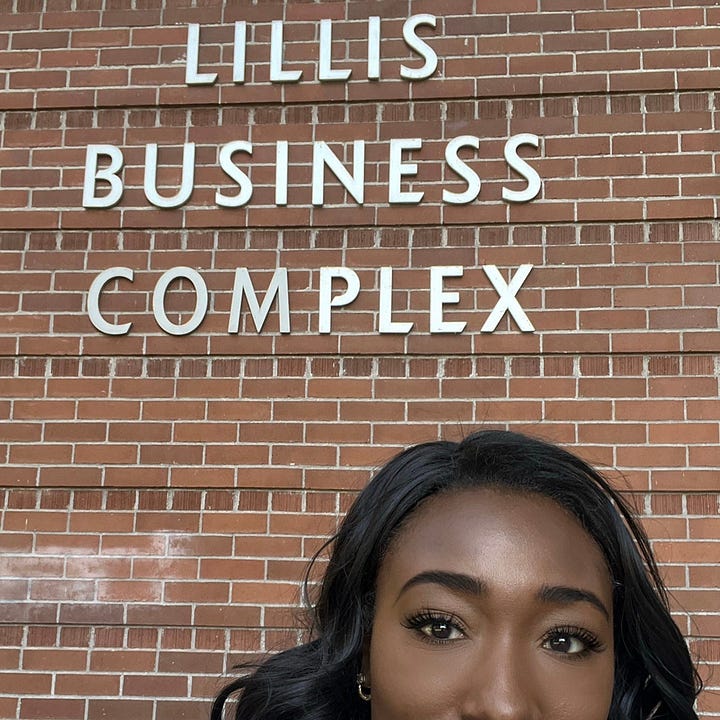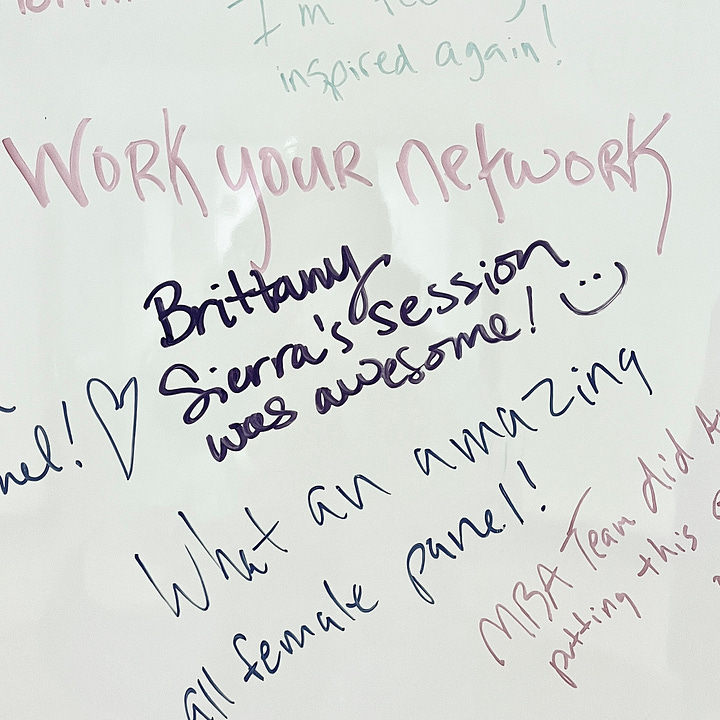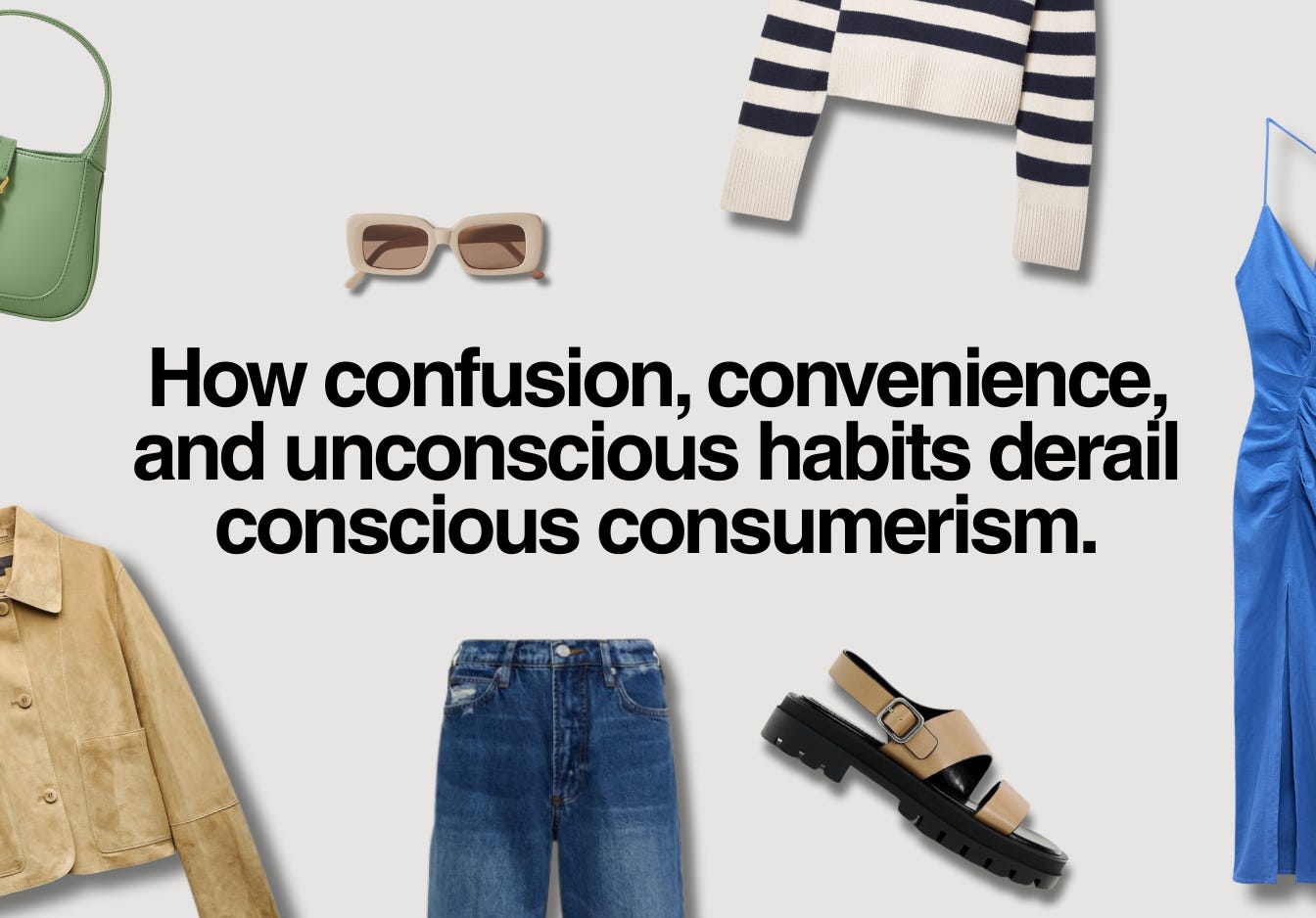Broke, but Adding to Cart Anyway
How confusion, convenience, and unconscious habits keep derailing conscious consumerism.
Shoutout to everyone who joined my impromptu live last week!
One of my goals for 2025 is to become a better public speaker. But four months into the year I hadn’t exactly acted on that goal, so I guess the universe decided to step in.
I was invited to speak on a panel at the University of Oregon’s Summit for Sustainable Organizations. Then, two days before the event, I found out I wasn’t just on a panel…I was also leading an hour-long breakout session.
I hadn’t given a presentation in years, probably not since I was running branding and marketing workshops at Tea Bar back in 2015 or 2016.




And adding to the chaos? The irony of being asked to speak at UO is that I went to UO… and dropped out.
Which is probably why I’ve spent a good chunk of my career doing the absolute most to prove myself to whatever version of me that thought not having a degree meant I had something to make up for.
Ah, the self-inflicted baggage. 🧳
Anyway, going live and walking through my presentation with you was incredibly helpful. The feedback from the presentation was overwhelmingly positive. Good call on cutting those extra stats, by the way. I definitely went a little too hard trying to squeeze all the numbers in, ha!


Naturally, I chose to do my breakout on consumer psychology, behavior, emotion—the usual suspects.
If you’ve been here for a while, you already know that I believe perceived value is a major reason most sustainable products don’t convert and why most sustainable brands fail.
As sustainability advocates, we often assume that because consumers care about sustainability it must be their top priority. That all their values orbit around doing the “right” thing.
So we hit them with logic. With guilt. And with ethics.
But people don’t make decisions based on logic. They make decisions based on emotion, and then justify them with logic.
The pull of identity, aspiration, and cultural belonging is usually way stronger than the quiet voice of “be responsible.”
If we want sustainability to compete, we can’t just rely on values alone. We have to understand how people actually think, feel, and behave.
What I hadn’t fully sat with, until recently, is how much confusion gets in the way of that value even registering.
One major source of that confusion is the lack of consensus on what “sustainable fashion” even means.
The industry doesn’t have a universal definition. Which means brands, NGOs, regulators, consumers, we might all be using the same language, but talking about completely different things.
Sure, there’s probably some overlap. But most of it comes down to personal values.
For one person, it’s about water use. For another, it’s labor. For someone else, it’s carbon or animal welfare. Everyone has their “thing,” and that shapes how they define what’s sustainable.
And with no legal definition, no shared baseline, and certifications under fire for being vague or misleading, brands are left to fill in the blanks.
So when we talk about sustainable fashion, we’re not just dealing with a lack of clarity. We’re dealing with a tangle of competing interpretations.
And that confusion isn’t just a headache for consumers. It’s a minefield for brands trying to meet expectations and avoid getting called out for greenwashing.
When there’s no clear definition or baseline, everything starts to blur. Labels feel vague. Claims feel performative. Eventually it all just sounds like marketing. And when that happens, people stop believing any of it.
That’s what hit me reading Public Inc.’s new 2025 Conscious Consumer Report.
According to the report, nearly half of consumers have walked away from a product because the sustainability claim didn’t make sense. Even for the most “conscious” shoppers, the ones who actually care the most, that number jumps to 87%!
Let that sink in: the people who care the most are the ones most likely to abandon the purchase. If the message doesn’t click, the value doesn’t either.
We spend so much time talking about the attitude-behavior-gap, the gap between what consumers say they care about and what they actually do.
However, I’d argue the real gap is between how we present sustainability, and how people make decisions.
And when you look at the latest data, that disconnect shows up loud and clear.
The Conscious Consumer Report surfaced four insights on the attitude-behavior gap (also known as the say-do gap). I broke each one down through the lens of behavioral science to understand why good intentions still don’t lead to follow-through, and what brands can do about it.
Whether you’re trying to shift consumer behavior, refine your brand messaging, or avoid wasting budget on campaigns that fall flat, these are the four shifts you need to understand right now.








